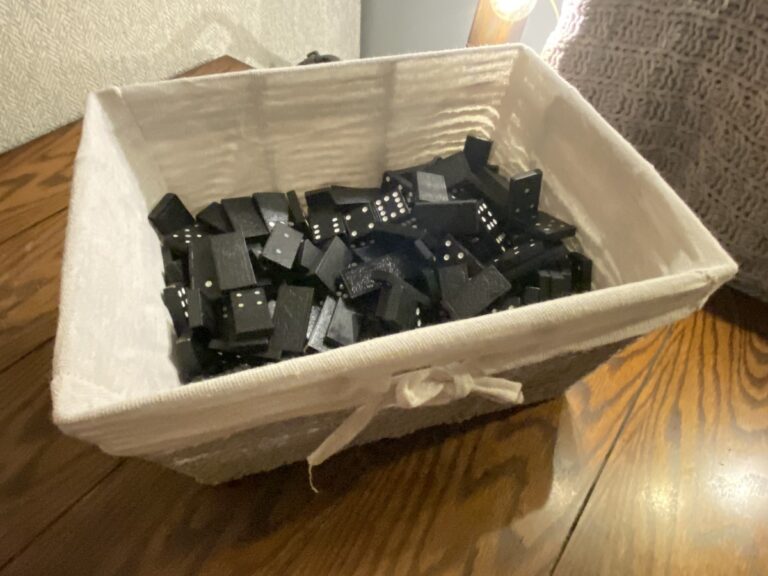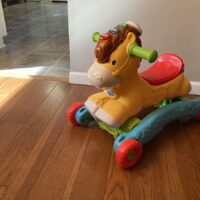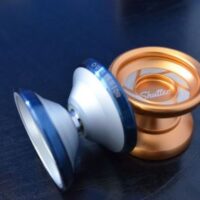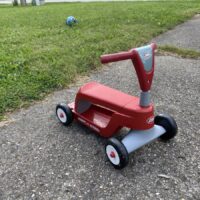For the past 22 years, I have enjoyed a career as a public school teacher. It seems that every few years, we are learning a new curriculum and/or strategy for every math concept. When Common Core rolled around, there appeared to be seventeen strategies just for one concept. I interviewed several colleagues and mathematicians to learn the top strategies for learning single-digit multiplication. Here are some ways how to teach kids multiplication strategies in order to help avoid those obstacles and make teaching and learning multiplication fun. Where we want them to be fluent in their multiplication facts, memorization should be the last step.
Introduce Multiplication Facts One at a Time
Multiplication can be easy to learn if you are strategic. After you have taught multiplying by 0, 1, and 2, start implementing the more advanced steps such as multiples of 3, 4, and so on. Focus on the why of each multiple, and the facts of each multiple, before moving on to the next multiple. Once the students understand the concepts of the multiples 0 to 3, then move on to the multiples of 4 to 7, and then 8 to 10. Hold off teaching students more complicated teen multiples until they master the single-digit multiples.
RELATED: How Much Does it Cost to Homeschool Your Child?
Strategies for Single Digit Multiplication
Visuals
This is huge! When teaching little ones, visuals help. Visual learning helps students gather and process information from pictures, anchor charts, graphs, and symbols. Observation, recognition, comprehension, and interpretation are skills built through visual learning.
With multiplication, the use of pictures, as visual representations, aids in the understanding of the multiplication solutions. For example, equal groups can be represented by pictures of equal groups of objects or arrays. Create anchor charts that can be displayed in the room where you are teaching the child(ren). You can create the anchor charts using a spreadsheet, a picture app, or with markers and large paper. Visuals, such as these, will help with consistency.
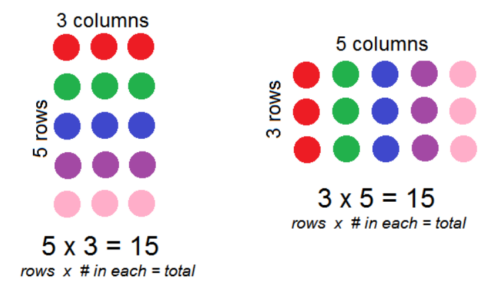
Equal groups of 5 x 3

Equal groups of 3 x 5
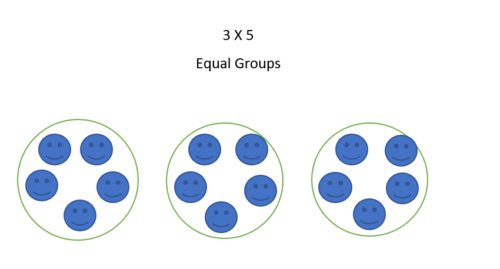
Manipulatives
Hands-on learning helps the abstract become concrete. Use manipulatives when teaching multiplication. This allows for students to “manipulate” objects to solve multiplication problems. Manipulatives don’t have to be store-bought. You can use dried beans, cereal, blocks, LEGO bricks, or even construction paper.
Dried beans and cereal can be used for the child(ren) to create arrays and then write multiplication equations.
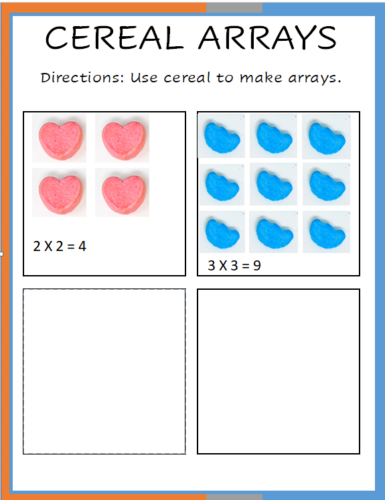
LEGO bricks can also be used to show arrays or have the child(ren)or build to make equal groups. For example: “show me three groups of eight”. The student can either place the blocks next to each other or build a tower (or structure) with the three groups of eight. To increase the level of complexity, assign a structure for the student to build using only the products, or groups, that are assigned. Give specific instructions in that they have to build a structure that won’t fall over or that certain groups have to be in a specific location on the structure. As an added bonus, this activity will increase other skills, beyond multiplication. For example, this will build skills in reasoning, fine motor, and patience.
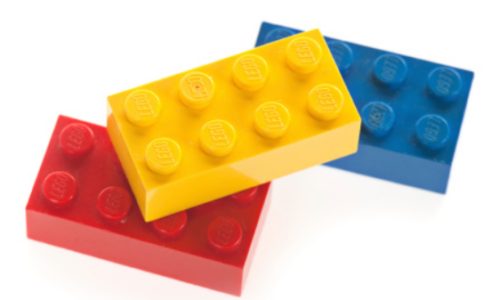
Relate Multiplication to Repeated Addition
Multiplication is a faster way to solve problems that require repeated addition. By the time students move on to multiplication, they should already be comfortable solving addition problems. Hold off teaching memorization. Teach the students the “why” of multiplication.
Use examples like the one below. It will help to write out examples so that the students can see the “why”.
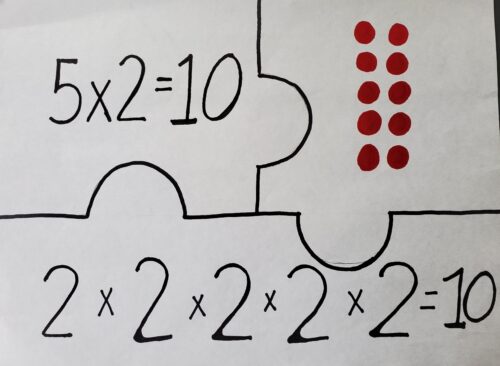
Start with Easy Multiples
The Zero Property
Any number multiplied by zero is zero. Relate the zero property to addition: 5 + 0 = 5. Zero has no identity. A fun game to play would be that, after the students are taught that any number times zero is zero, ask the students different numbers multiplied by zero. For example: What is 20 x 0? The students will say zero. Then ask, what is 1 million x zero. The students will say zero, again. Make it fun.
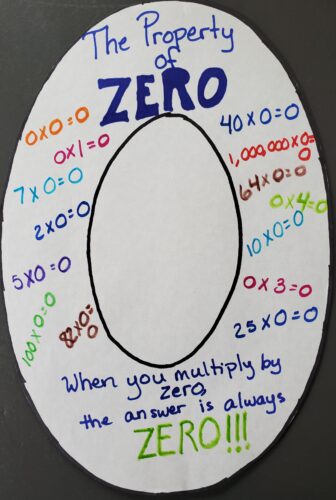
The Identity Property
Any number multiplied by 1 is itself. Relate this property to addition. 5 by itself is 5. This is the same as 5 x 1. The one represents that it is only one factor. One factor is itself in the answer. Have your students relate this property to real-life instances. For example, one stack of seven books is seven books. A single row of ten chairs is ten chairs. Then have some fun with the student(s). Have them give any number to multiply by one and they will see that they will get the number where they started. To dig deeper, have the students give situations to those large numbers.
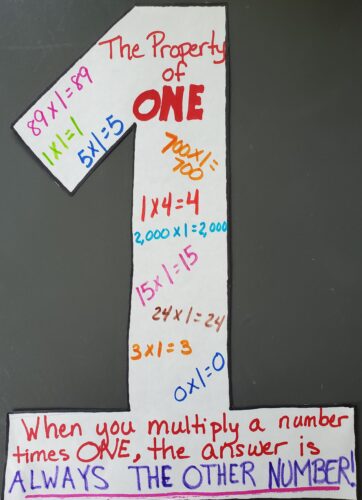
Multiples of Two
In kindergarten and first grade, students are taught doubles addition such as 7 + 7 and 5 +5. Relate these problems to multiplying the number by tw0. Double the number.
7 + 7 = 14
7 x 2 = 14
This strategy builds on what they already know with repeated addition. Make sure to revisit visuals as a way to help make the concept become concrete in their minds. A great visual is to use arrays. You can start out with simple objects (pictures) such as circles or squares. Then move on to using objects the children might use in their own lives. This helps them relate the array to their own activities.
Example:
2 + 2 + 2 + 2 + 2 + 2 = 12 or 6 + 6 = 12
2 X 6 = 12 or 6 X 2 = 12

Example:
3 + 3 + 3 + 3 = 12 or 4 + 4 + 4 = 12
3 X 4 = 12 or 4 X 3 = 12
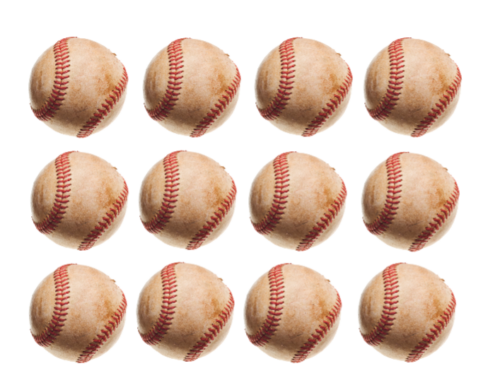
Multiples of Five
Any number multiplied by five ends in either a five or a zero. Before teaching multiples of five, assess that the student(s) know how to skip count by 5. If they know how to skip count by five, they will know that there will always be a five or a zero in the one’s place. In the beginning, they can use their fingers to skip count by five when multiplying by five. For example, 3 X 5. Hold up three fingers and skip count by five. This will give the product.
Multiples of Ten
Just as with multiples of five, it is important to assess that the student(s) know how to skip count by 10 when teaching multiples of ten. They will know that any number multiplied by ten is the number with a zero in the one’s place. 9 X 10 = 90; 5 X 10 = 50; 8 X 10 = 80.
The Nines Times Table
Since learning multiplication can, sometimes, be tricky, it is good to teach some “tricks” to learn single-digit multiplication. Multiplying by nine is a fun trick. Have the student hold up all ten fingers, both palms facing out or both palms facing in. Give the student a problem, such as 5 X 4. Starting with the farthest finger on the left, have the student count five fingers over and put that fifth finger down. The answer is shown on their fingers! The number of fingers to the left of the finger put down, is the number of tens. The number of fingers to the right of the finger that is down is the number of ones. The product is 45. If a student has difficulty using their fingers, use the model below. They can bend the construction paper “fingers”.
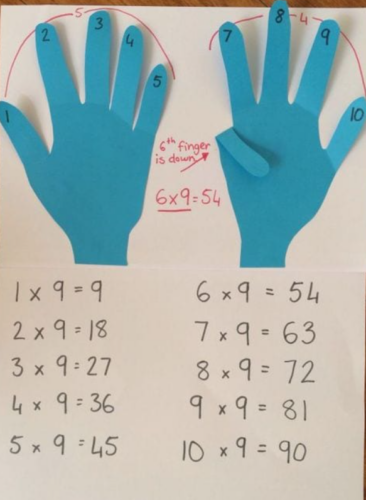
Memorization
Memorization should be the final step in teaching and learning single-digit multiplication facts. Although, many students have, most likely, already begun to memorize facts. Ultimately, the student(s) should have the multiplication facts memorized before moving on to learning multi-digit multiplication, distributive property, and the associative property. Make sure to give time for students to practice their facts. Keep visuals, such as anchor charts and posters, displayed for student reference.
RELATED: Benefits of Homeschooling
Keep Multiplication Fun!
Games are a great way to get children excited about math! There are some really wonderful games online. I prefer games that allow students to interact with others…such as board games and partner work. Multiplication can be a stressful skill for students to learn but it is an important skill. Many studies have shown that multiplication thinking is a necessary ability for success in later subjects.
Candy Land
Candy Land is usually played for students to learn colors. For the multiplication game, I wrote numbers 1 – 15 on the colored cards. Then I wrote the numbers 1 – 15 on the colored spaces. A player pulls a card and multiplies the number on the card with the number on the corresponding color on the game board. If they get the answer correct, they stay at that spot. An incorrect answer will result in the player moving back to the last place they were. If a player pulls a double-colored card, they multiply the next two numbers on the board with the corresponding colors. The first player to make it to the end wins.
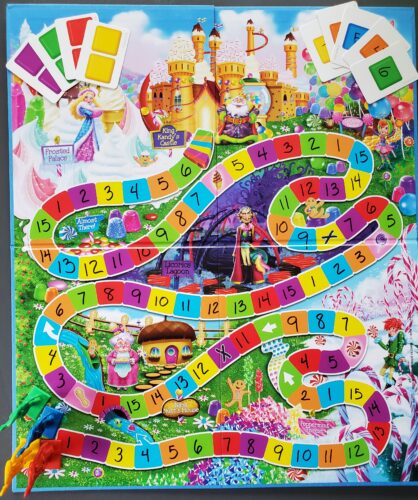
Multiplication Show-Down
Have the students form two teams. Have the same problem written on two different wipe-off boards, or chart paper. One student, from each team, has a certain amount of time to solve the problem. When the buzzer goes off, the teacher checks the answer. The correct answer wins the point for the team and a new problem goes up for the next two players. If no correct answer is written, that problem goes to the next two players. Each player gets a turn. When all students have had a turn, the points are tallied and the winning team announced. You can use this as an added bonus for classroom management, as well.
Bingo
This is probably the easiest game to create for multiplication practice and review. You create different cards with products of the facts already learned. Bingo is a classic game that helps kids build their multiplication knowledge. Plus, it’s a lot of fun. Have cards with boxes in 5 X 5. Place products on the cards such as 16, 48, 72, etc. (or allow the players to make their own boards with products they have learned) The teacher (parent) will call out a multiplication problem. If the player has the product on their card, they place a marker. The first player to get BINGO wins!
As a twist, you can have the players write the multiplication equations on their boards. Then the caller will call out a product, and the players have to place a marker on the equation that gives that product if they have that equation on their board.
Dominoes
There are many ways to incorporate dominoes into the multiplication fun! One way is to have students find dominoes with the same products and line them up. For example, a domino that has half with six dots and half that is blank equals zero. A domino that has half with two dots and half that is blank also equals zero. Those two dominoes would be lined up.
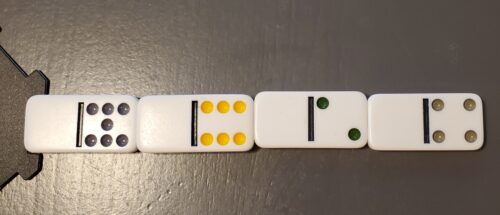
Another way, to review multiplication with dominoes, is to have the player place the first domino and multiply the numbers. The product is the first half of the next domino. Then the player multiplies the two numbers on the new domino and that new product is the first half of the next domino, etc. until no more dominoes can be lined up. Then they start all over again with a new starting domino.
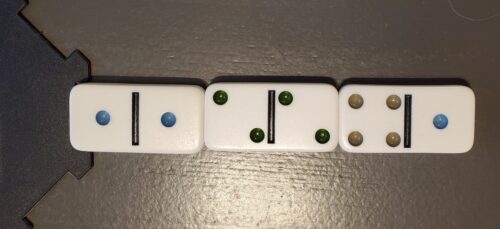
After the players have learned single-digit multiplication equations, the level of this game can increase to two-digit multiplication equations. The player will take two dominoes and line them up either horizontally or vertically. These two dominoes become the multiplication equation. For example: if the first domino has a 5 and a 2, and the second domino has a 3 and a 4, the problem would be 52 X 34.
Dominoes are great for a partner and small group work but also great for a student to work on their own, reinforcing their own knowledge and skills.
Multiplication War
As in the traditional card game, War, there are two players. Each player flips one of the cards, face up. Then they multiply the two numbers on the cards together. They can write the math equation on a piece of paper to help them solve the problem. The player that solves the equation first, keeps the cards. In the end, the player with the most cards wins. You can assign a time limit, like five minutes, or a set number of problems to complete.
To change the game a little, both students flip two cards, multiply the numbers together and whoever has the highest product keeps all four of the cards. At the end of the game, the player with the most cards wins. Again, you can set a time limit or a number of problems to complete.
(Jack = 11; Queen = 12; King = 13; Ace = 1)
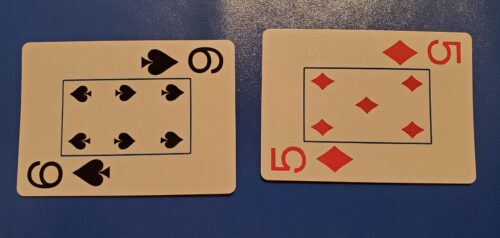
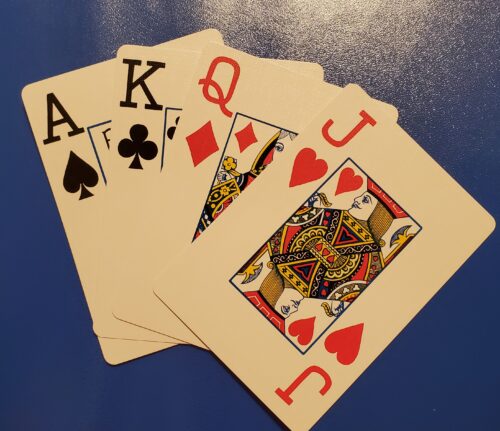
Additional Resources
Songs
Schoolhouse Rock has a song for every multiplication fact. The songs are catchy and easy to sing along with. The first-ever Schoolhouse Rock song is “Three is a Magic Number.” Multiplication Mashup, by the McCarthy Math Academy, is also fun to sing along with and practice facts. Use music sites to help you find songs reinforcing multiplication strategies and concepts.
Websites
There are several websites that can help reinforce multiplication fluency while incorporating something fun and different for the student. Here are just a few of the many websites available.
Multiplication.com has premade quizzes for multiplication that is self-correcting. There is also a game titled Fish Shop that lets the player choose a level of easy, medium, and hard.
Cool Math 4 Kids has premade, self-correcting multiplication quizzes and also has online games. There are several games available at different skill levels.
Multiplication Picnic is an online platform that has games that build fact fluency while reinforcing the multiplication foundation through visuals.
Mummy Marathon is a game that allows the player to choose which fact to practice. The player races to the finish by completing multiplication equations.
Final Thoughts
Learning multiplication can be a bit scary for young children. When using strategies, and games, children will be able to break down multiplication into comprehendible parts. After they learn the basics, you can start having them memorize facts so that the answers come quickly and easily. Fact fluency is a bi-product of the understanding of multiplication. Take your time and allow your child to master a concept.
Also, note that you do not have to teach the multiplication facts in numerical order (ie 0s, 1s, 2s, 3s, 4s, etc.) Teach the easier facts first. I suggest starting your teaching in this order…multiples of zero, then ones, and then doubles facts (ie. 2s, 5s, 10s). Then move on to the multiples of nines. I would save the harder facts, such as multiples of 7 and 8, for last. Using tools, strategies, multiplication charts, and games will allow you to teach the “why” of multiplication so that it becomes a skill the child will carry with them throughout their life.
